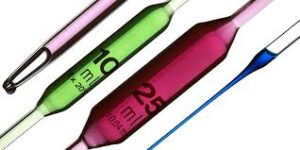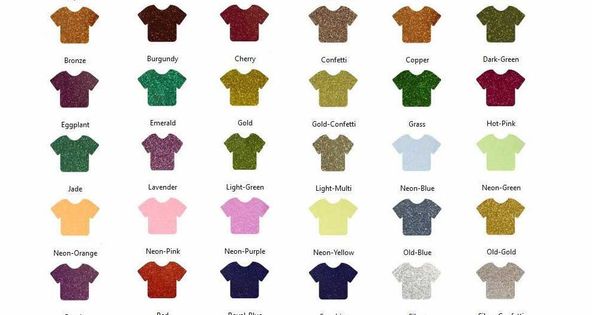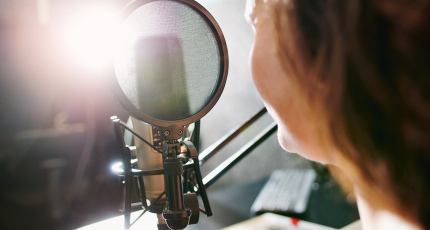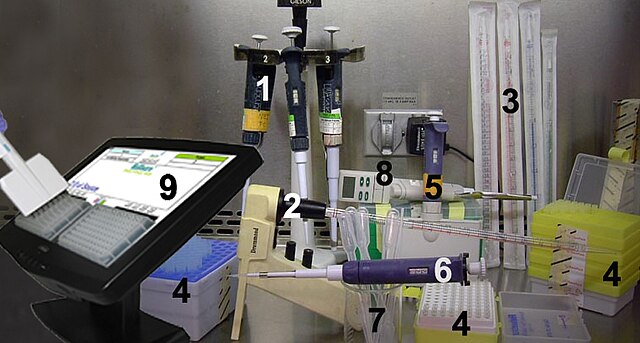
A volumetric pipette is a laboratory instrument used to accurately measure and transfer a specific volume of liquid. It has a tapered glass tube with a bulb at one end and a narrow tip at the other. By drawing liquid into the bulb and releasing it, precise volumes can be delivered.
Volumetric solutions are commonly employed in quantitative chemical analysis to determine the quantity of a substance by measuring the volume it occupies. This technique is often used to calculate the concentration of an unknown reactant.
Volumetric Pipette: Quick Overview
- Volumetric pipettes are designed for precise measurements of a single specific volume.
- They have a single, distinct calibration mark at the top indicating the volume they contain when filled to that mark.
- Volumetric pipettes are marked as “To Contain” (TC) to signify the specified volume.
- They are primarily used in applications that demand high precision, such as analytical chemistry, titrations, and the preparation of accurate standard solutions.
- Volumetric pipettes are reserved for specific volumes and are not intended for general liquid transfer.
- They are highly precise instruments designed for accurate and reliable measurements in specialized applications.
- Definition:
Volumetric pipettes are a type of laboratory glassware that is specifically designed for extremely accurate volume measurements. Unlike other types of pipettes, they have a single graduation mark near the top and are engineered to deliver a precise volume with high precision.
- Usage:
Volumetric pipettes are utilized in disciplines like analytical chemistry, titrations, and the creation of standard solutions where precision and accuracy are of utmost importance. They are not intended for general liquid transfer but rather for specific measurements requiring high levels of accuracy.
- Calibration:
Volumetric pipettes are usually labeled as “To Contain” (TC), indicating that they hold the specified volume when filled up to the mark. These pipettes have a distinct calibration point and a single, clearly defined volume measurement.
- Volumetric bulb pipette
These pipettes have a bulbous section followed by a long, narrow portion above it, and they feature a single calibration mark. Similar to volumetric flasks, they are calibrated to measure a specific volume. Common volumes for these pipettes include 1, 2, 5, 10, 20, 25, 50, and 100 mL.
What is a volumetric pipette used for?
Volumetric pipettes, also called bulb pipettes, are manual instruments used in laboratories to accurately transfer and dispense precise quantities of liquid. They are widely used for their ability to provide highly accurate measurements with a single volume of liquid.
🔬 Volumetric pipettes are essential tools in laboratories used for precise measurement and transfer of specific volumes of liquids. They are commonly used in various scientific disciplines, such as chemistry, biology, and medical research.
🧪 Volumetric pipettes are particularly useful when high accuracy and precision are required, such as in preparing standard solutions, dilutions, or conducting titrations. They ensure that the desired volume is carefully measured and delivered, allowing for consistent and reliable experimental results.
💡 The tapered shape of a volumetric pipette allows for optimal liquid transfer, minimizing the risk of contamination or loss. They are designed to deliver a specific volume, often indicated by a marking or line on the pipette. To use a Vmetric pipette, one aspirates the liquid into the bulb and then releases it gradually by controlling the flow with the narrow tip.
👩🔬 Proper handling and technique are crucial when using Vmetric pipettes to ensure accurate and reliable measurements. It’s important to follow specific procedures, such as rinsing the pipette with the solution being measured and using the appropriate pipetting technique.
A volumetric flask, also known as a measuring flask or graduated flask, is a specialized laboratory flask designed to hold a specific volume of liquid at a defined temperature. Volumetric flasks are calibrated to ensure precise measurements and are commonly used for dilutions and the preparation of standard solutions in laboratory settings.
10 ml volumetric pipette.
A 10 ml Vmetric pipette is a specific type of pipette that is designed to accurately measure and transfer a volume of 10 ml of liquid. It is calibrated to deliver this specific volume with a high degree of accuracy and precision. This pipette is commonly used in scientific and laboratory settings where precise and controlled liquid handling is required.
Volumetric pipettes find widespread use in industrial, research, clinical, and educational laboratories. They are meticulously calibrated to transfer a specific volume of liquid with exceptional accuracy. In contrast, serological pipettes are versatile and can draw or dispense various amounts of liquid within their range.
The high precision of a volumetric pipette is a result of its design. It is calibrated to deliver a precise volume, such as 10.00 mL ± 0.01 mL, provided that the bottom of the meniscus aligns with the center of the calibration line.
The tolerance of ±0.02 mL represents the uncertainty or margin of error in the pipette’s measurement. Consequently, the best estimate of its expected volume is 10.00 mL ± 0.02 mL. This uncertainty is primarily determinate, meaning it can be quantified and accounted for.
How to use a volumetric pipette

Using a volumetric pipette correctly is crucial to ensuring accurate and precise measurements. Here is a step-by-step guide on how to use a Vmetric pipette:
- Prepare the pipette: Ensure that the pipette is clean and free from any residue or liquid. If necessary, rinse it with a suitable solvent or the liquid you will be working with.
- Aspirate the liquid: Using a pipette filler or a bulb, draw the liquid into the pipette. Place the pipette tip into the liquid, then squeeze and release the bulb or pipette filler to create a vacuum. The liquid should be drawn up into the pipette above the calibration mark.
- Drain the excess liquid: Allow the liquid to drain from the pipette gradually. Hold the pipette vertically with the tip pointing downwards. Do not touch the tip to any surface, as this can introduce contamination or alter the volume.
- Deliver the desired volume: To deliver the specific volume accurately, use the pipette filler or bulb to control the flow of liquid. Slowly release the liquid into the desired container, ensuring that the tip is inside and the liquid is fully expelled. Do not blow out the remaining liquid.
- Drain completely: After delivering the desired volume, wait for a few seconds to allow any remaining liquid in the pipette tip to drain out completely. This ensures that the intended volume is accurately delivered.
- Discard the pipette: Dispose of the used pipette by proper laboratory waste disposal procedures. Some pipettes may be reusable and need to be cleaned and sterilized before reuse.
It’s important to handle the pipette carefully, avoiding any contact between the tip and surfaces that may introduce contamination. Additionally, always follow the specific instructions provided by the manufacturer for the particular volumetric pipette you are using, as there may be slight variations in usage and technique.
Why is a volumetric pipette more accurate??
Vmetric pipettes are designed to be more accurate compared to other types of pipettes due to their specific construction and calibration. Here are a few reasons why volumetric pipettes are known for their accuracy:
- Calibration: Volumetric pipettes undergo meticulous calibration during their manufacturing process. Each pipette is individually tested and adjusted to ensure that it delivers the intended volume with a high level of accuracy.
- Single-volume delivery: Volumetric pipettes are designed to deliver a fixed and specific volume of liquid. They are calibrated to contain or deliver that particular volume precisely. This eliminates the need for any additional adjustments or calculations, resulting in more accurate measurements.
- Narrow tolerance range: Volumetric pipettes have a narrow tolerance range, meaning the acceptable deviation from the intended volume is very small. This tight tolerance ensures minimal variation in the delivered volume, enhancing the accuracy of the pipette.
- Construction and design: Volumetric pipettes are typically made with high-quality materials, such as borosilicate glass, which is resistant to thermal expansion and chemical reactions. Their tapered shape and narrow tip allow for controlled and precise liquid transfer.
- Handling and technique: Accurate usage of volumetric pipettes requires proper technique and handling. Following recommended procedures, such as proper rinsing, using the correct pipetting technique, and ensuring the meniscus is at the calibration mark, helps maintain accuracy during pipetting.
While Vmetric pipettes are generally considered more accurate, it’s important to note that both instruments can provide reliable measurements when used correctly and within their specific applications. The choice between a Vmetric pipette and a graduated cylinder depends on the level of accuracy needed for a particular experiment or procedure.
Is a volumetric pipette more accurate than a graduated cylinder?
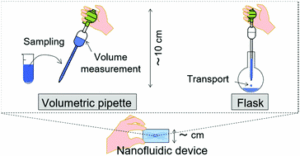
Yes, a Vmetric pipette is generally more accurate than a graduated cylinder when it comes to precise liquid measurements. Here are a few reasons why:
- Calibration:
Volumetric pipettes are calibrated to deliver or contain a specific volume of liquid with a high level of accuracy. On the other hand, graduated cylinders typically have markings or graduations that provide approximate volume measurements but may not be as precise.
- Single-volume delivery:
volumetric pipettes are designed to deliver a fixed volume of liquid, whereas graduated cylinders are versatile in that they can measure various volumes of liquid. The fixed-volume delivery of a Vmetric pipette eliminates the need for interpolation or estimation that may be required with a graduated cylinder.
- Tolerance:
Volumetric pipettes have a smaller tolerance range compared to graduated cylinders. The acceptable deviation from the intended volume is typically smaller for Vmetric pipettes, resulting in more accurate measurements.
- Design and construction:
Volumetric pipettes are designed to minimize liquid loss and ensure controlled liquid transfer. They often have a tapered shape and a narrow tip, which allows for precise dispensing. Graduated cylinders, on the other hand, have a wider shape and may be more prone to evaporation or liquid loss.
- Handling and technique:
Volumetric pipettes require specific techniques and proper handling to ensure accurate measurements. They typically involve filling the pipette to a specific mark or line and delivering the liquid without introducing any air bubbles. Graduated cylinders, while less demanding in terms of technique, may introduce more variability in measurements due to factors such as meniscus reading and parallax errors.
Among the various types of measuring glassware, the volumetric pipette stands out as the most accurate and efficient tool for volumetric analysis. It excels at accurately measuring and transferring precise volumes of substances. Additionally, the design of the volumetric pipette allows for better control and accounting of every drop of the substance, resulting in enhanced accuracy compared to a measuring cylinder.
The volumetric flask exhibited the lowest percent error of 0.3%, indicating that it is the most accurate among the measuring instruments used. The graduated cylinder and beaker had similar percent errors of 2.2% and 3.5%, respectively, implying that both are fairly accurate, albeit slightly less precise than the volumetric flask. On the other hand, the flask had the highest percent error of 17.4%, indicating it is the least accurate among the instruments used for the measurement.

